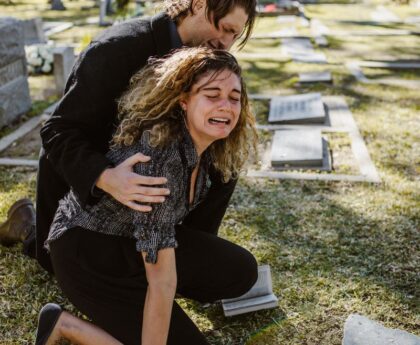Victoria Rattled by Magnitude 5 Earthquake
Overview
On Sunday morning, Victoria, Australia experienced a magnitude 5 earthquake along the Great Ocean Road. The quake’s epicenter was reported in the Cape Otway region, approximately 150 kilometers southwest of Melbourne. While there were some reports of minor damage and calls for assistance, fortunately, no injuries have been reported thus far. This earthquake is the largest recorded in Victoria since the 2021 Woods Point earthquake.
The Aftermath
Premier Jacinta Allan stated that two properties in the Colac area may have been damaged as a result of the earthquake. Further assessments are currently being undertaken to determine the extent of the damage. Additionally, an aftershock of 3.5 magnitude was felt in Apollo Bay at 5:44 am.
Expert Analysis
Adam Pascale, the chief scientist at the Seismology Research Centre, highlighted that this earthquake was relatively short in duration compared to previous earthquakes in Melbourne. He reassured the public that there would be no significant damage unless the earthquake was reasonably close. Pascale also clarified that there has not been an increase in earthquake activity in the region, despite the perception that there has been. He attributed the increased awareness of earthquakes to people feeling them more due to their proximity to populated areas.
Preparing for Future Earthquakes
While aftershocks are expected to continue in the Cape Otway region, Pascale emphasized the importance of preparedness in the face of potential large-scale earthquakes. He urged residents to become familiar with the “drop, cover, and hold on” method, which is recommended during seismic events.
Editorial: A Wake-Up Call for Victoria
The Impact of the Earthquake
The magnitude 5 earthquake that shook Victoria serves as a wake-up call for the region. While the damage caused by this particular earthquake was relatively minor, it serves as a reminder of the significant seismic activity that can occur in Australia. It is crucial that both government authorities and citizens recognize the importance of earthquake preparedness and take appropriate measures to mitigate risks.
A False Perception
The perception that there has been an increase in earthquakes in Victoria and Melbourne this year is not supported by scientific analysis. Adam Pascale, the chief scientist at the Seismology Research Centre, clarified that the recent earthquakes are not indicative of an actual increase in seismic activity. Rather, they are a result of the earthquakes being felt more acutely due to their proximity to populated areas. It is essential to base our understanding of earthquakes on scientific data rather than mere anecdotal evidence.
Preparedness Measures
In light of this wake-up call, it is imperative that residents of earthquake-prone areas in Victoria take the necessary steps to prepare for future seismic events. Becoming familiar with the “drop, cover, and hold on” method, as advocated by experts, can significantly reduce the risk of injury during an earthquake. Additionally, individuals and families should create emergency plans, assemble emergency supply kits, and reinforce their homes to withstand potential seismic activity.
Government Response
The Victorian government must take this earthquake as an opportunity to reassess its emergency preparedness measures. Adequate funding should be allocated to educate the public about earthquake preparedness and the creation of resilient infrastructure. By investing in earthquake early warning systems and ensuring buildings meet seismic safety standards, the government can minimize the impact of future earthquakes.
Awareness and Education
Beyond government efforts, it is vital for communities and individuals to prioritize earthquake awareness and education. Local authorities, schools, and community organizations should conduct regular drills and workshops to ensure that residents know how to react during seismic events. By fostering a culture of preparedness, communities can enhance their resilience and reduce the potential for panic and injuries.
Conclusion
The magnitude 5 earthquake that rocked Victoria serves as a reminder of the seismic activity present in Australia. While the damage caused by this particular earthquake was minimal, it should prompt both government authorities and individuals to take earthquake preparedness seriously. By investing in infrastructure, educating the public, and fostering a culture of preparedness, Victoria can become more resilient to future seismic events. It is crucial that the lessons learned from this earthquake are not forgotten and that proactive measures are taken to protect communities in the future.

<< photo by Clive Kim >>
The image is for illustrative purposes only and does not depict the actual situation.
You might want to read !
- “Matildas Unleashed: Exploring the Meteoric Rise of Australia’s Women’s Soccer Team”
- Battle Down Under: Cricket Rivals Clash in ICC Cricket World Cup 2023
- Title: “Dimma’s Scathing Verbal Blow: Vic’s Leadership Called into Question”
- Earthquake shakes Victorian ground: Exploring the impact and aftermath
- Rumbling Revelations: Unsettling 5.0 Magnitude Earthquake Shakes Victoria’s South-West
- “Wading Through the Flames: Vijay Shines in Lokesh’s ‘Leo’ Movie Review”
- “Damien Harris’ Scary Neck Injury: An Urgent Wake-Up Call for Player Safety in Australian Football”
- “Bomb Scare Shakes Queenstown Airport: A Wake-Up Call for Aviation Security”
- Denyer’s Terrifying On-Air Health Crisis: An Urgent Wake-Up Call for Television Safety Regulations




